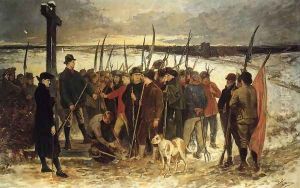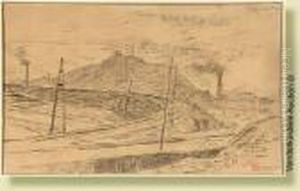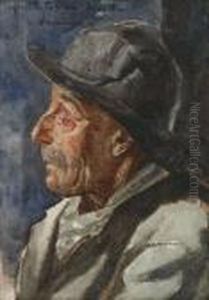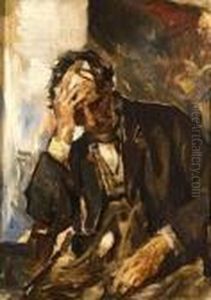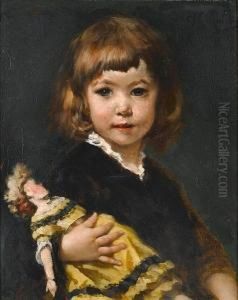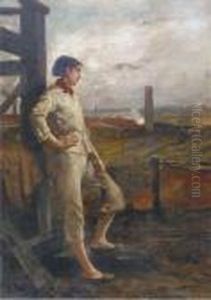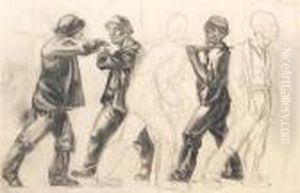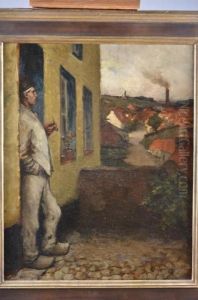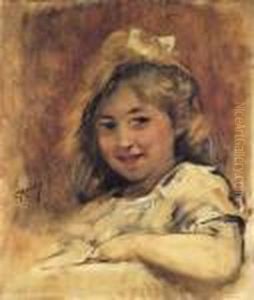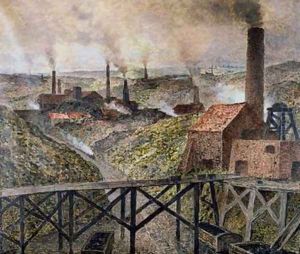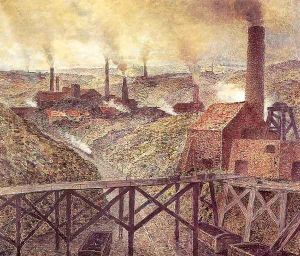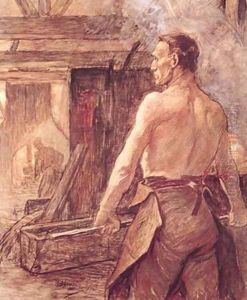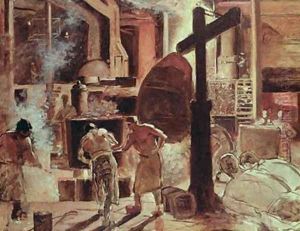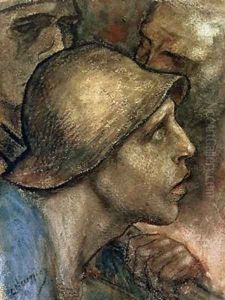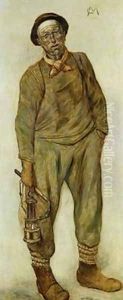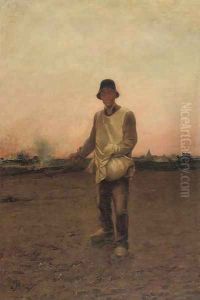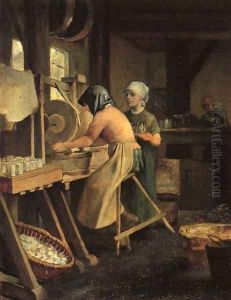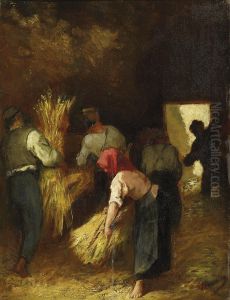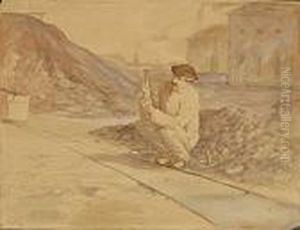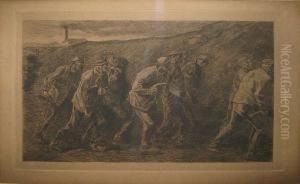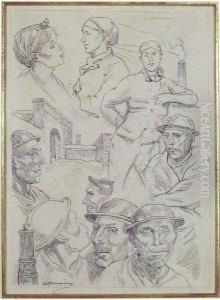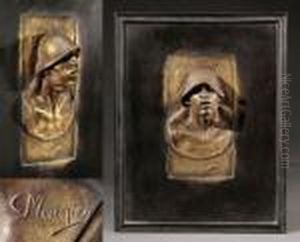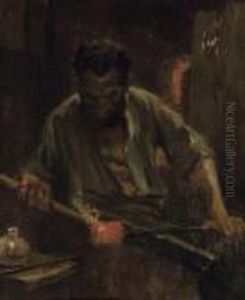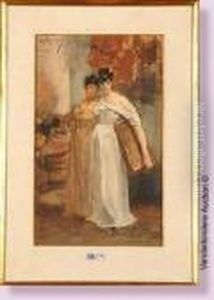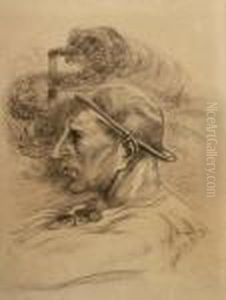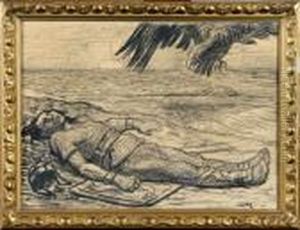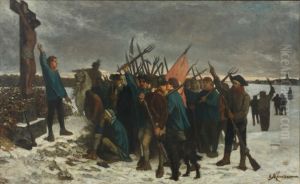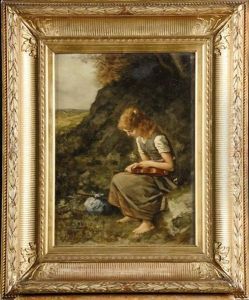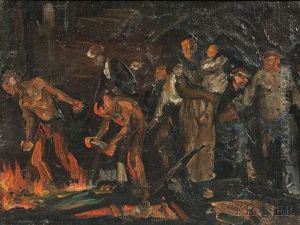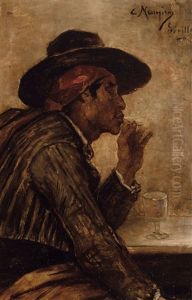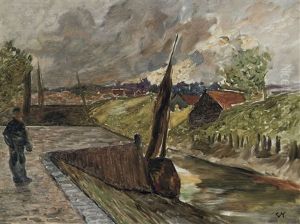Constantin Meunier Paintings
Constantin Meunier was a Belgian painter and sculptor, born on April 12, 1831, in the city of Etterbeek, near Brussels. He is best known for his powerful works that depict the lives of laborers and the industrial working class. His art is often associated with the Realist movement, which emerged in the mid-19th century as a reaction to Romanticism, focusing on the portrayal of everyday life without idealization.
Initially, Meunier began his artistic career as a painter, studying at the Académie Royale des Beaux-Arts in Brussels. His early works were primarily religious paintings, genre scenes, and portraits. However, his artistic focus shifted after a visit to the Borinage, a mining region in Belgium, in 1875. There, he became deeply moved by the difficult conditions faced by miners and the impact of the Industrial Revolution on workers.
This experience had a profound effect on Meunier, and he began to devote his work to the representation of laborers, emphasizing their dignity and significance in modern society. His sculptures, in particular, became emblematic of the working class, rendering the figures with a sense of heroism and monumentality. Among his most famous works is a series of bronze statues that highlight the physicality and struggle of laborers, such as 'The Hammerer' and 'The Puddler.'
Meunier's commitment to social realism and his ability to capture the essence of industrial labor won him international acclaim. He participated in numerous exhibitions, and his works were sought after by collectors and museums. Despite his focus on the working class, Meunier's art transcended social boundaries and was appreciated for its artistic quality and emotional depth.
Throughout his career, Meunier remained active in the Belgian art community, mentoring younger artists and participating in various artistic societies. He continued to produce both paintings and sculptures until his death on April 4, 1905, in Ixelles, another suburb of Brussels. Today, Constantin Meunier is remembered as a significant figure in the development of modern sculpture and as an artist who gave a voice to the industrial worker through his poignant representations of human labor.



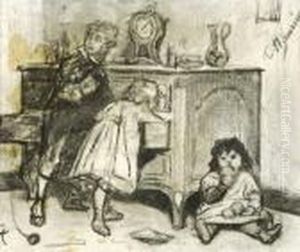

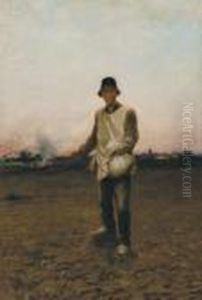
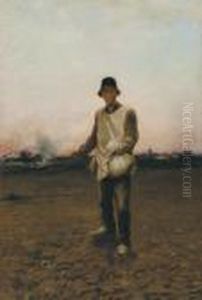


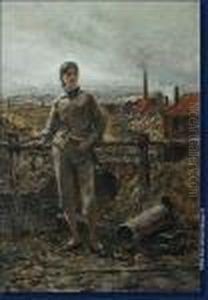



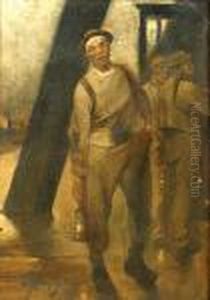

![[vieille Femme A La Cape Noire]](https://www.niceartgallery.com/imgs/2535543/s/constantin-meunier-vieille-femme-a-la-cape-noire-3f03bb57.jpg)
